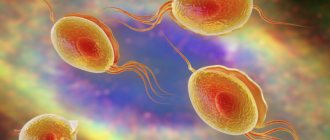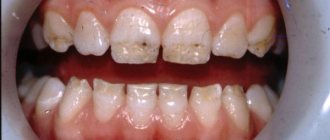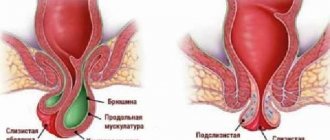Biochemical reactions in the human body occur constantly. This is the basis on which life is based.
Normally, if these processes occurred in laboratory conditions without outside participation, they would require hours, or even days, of time.
Why does everything happen so much faster in the body? It's all about special substances, enzymes. These are a kind of catalysts, compounds that are responsible for accelerating chemical reactions, all without exception.
In this case, the substance itself is not consumed and is reused in the same quality.
Lipase is a special enzyme that is responsible for the accelerated breakdown of fats, their conversion into triglycerides and acids, and ultimately for the transformation of compounds into energy.
Thus, the substance performs one of the most important tasks in the body, since without it there could be no normal life activity.
Deviations from adequate indicators occur in pathologies of the digestive tract, disorders of the gastrointestinal tract structures, but not only. The origin needs to be clarified separately, and the main thing is not to hesitate.
Treatment is etiotropic, carried out as needed and aimed at correcting the underlying pathology.
The role of the enzyme in the body
The key task of lipase (abbreviated as lipase) is the ability to accelerate the breakdown of complex fats. As a result, they turn into triglycerides, then into acids. That is, into those basic chemical structures from which it is easiest to obtain energy.
The process is not the simplest; it takes place in several stages.
Thus, without going into complicated explanations of human biochemistry, lipase is responsible for converting complex fats into simple ones in a multi-step reaction.
The result is the production of the required amount of energy, without which there can be no normal life activity, muscle contractility, or transmission of bioorganic impulses.
There is also a laboratory function. The diagnostic value of lipase lies in the ability to detect pathologies of the pancreas, the entire digestive tract and its structures.
Enzyme values are indicative but do not provide precise information about the origin and type of problem. It makes sense to undergo a full examination under the supervision of a gastroenterologist.
Reasons for the study
Indications for a lipase test are suspicious symptoms of an alleged pathological process in the gastrointestinal tract and other structures.
Specific reasons include:
- Pain in the left side of the abdomen. This localization is especially typical for pathologies of the pancreas and some other organs. If the indicator increases, there is a real risk of pancreatitis. At the same time, oncological processes, cancer, are possible; this option cannot be excluded.
- Nausea. With gastrointestinal pathologies, it occurs suddenly and goes away just as quickly. Increases after eating, even in small quantities. It is especially pronounced against the background of systematic consumption of fatty, fried, fast food, and potentially unhealthy foods.
- Vomit. Pathological manifestations are not always associated with diet. Sometimes it occurs suddenly, rapidly, several times in one episode. The pathological condition goes away on its own, but should alert the patient. Therefore, special diagnostics are carried out.
- Heaviness in the stomach. Feeling as if there is a foreign object inside the abdominal cavity. Distension and pressure occurs, as with flatulence. As a rule, the symptom is accompanied by additional clinical signs, including nausea, vomiting, and other manifestations.
- Heartburn. A feeling of severe discomfort in the epigastric region and further along the esophagus. It accompanies other symptoms and practically does not occur in isolation, which is typical for pathologies of the gastrointestinal tract.
- Belching and other dyspeptic symptoms. Including a sour or bitter taste in the mouth, increased gas formation, a sharp painful urge to empty the intestines and other pathological signs of this kind, which clearly indicate diseases of the digestive tract.
- Change in color of stool. From normal to whitish, earthy or beige. These are signs of damage to the liver and gallbladder. Against the background of these conditions, an increase or decrease in lipase is also quite possible.
- Digestive disorders. Changing the speed and quality of processing of incoming food. Consumed products can move along the tract for a whole day or more, at a rate of several hours. It is quite possible that enzymatic deficiency is to blame.
- Verification of previously obtained data. For example, during an ultrasound. The results need to be confirmed in additional ways. In particular, laboratory tests to make a diagnosis and draw clear conclusions.
- Preparing for surgery. As part of the preliminary examination.
- The period after treatment. Studying the dynamics of the pathological process. Assessment of enzyme parameters plays an important role in the initiation of therapy and during correction. Because based on the level of lipase, we can talk about movement in one direction or another.
When the concentration of a substance decreases, this is a positive sign, evidence of the effectiveness of the recovery course.
This is only part of the evidence. In fact, there are much more of them and the doctor can prescribe an event according to his own understanding.
Attention:
Despite the indicative nature of the increase or decrease in values, biochemical research alone is not enough.
We need to understand what caused the pathological process.
This is where specialized techniques and narrowly targeted examination methods come to the rescue. Based on the results of comprehensive diagnostics, an accurate diagnosis can be made.
Blood lipase levels and causes of deviations
Many people know about enzymes that they help digestive processes in the human body. For example, lipase in the blood is also needed to maintain normal body functions. Analysis of its quantity helps to identify serious diseases.
It is useful to know what lipase is and what it is responsible for in the body.
It is a protein compound that is soluble in water. Lipase is produced by several human organs. The enzyme helps:
- break down fats, dividing them into fractions, for subsequent processing by the digestive tract;
- absorb vitamins and fatty acids;
- carry out energy exchange.
The digestive enzyme enzyme acts on fats and triglycerides, releasing part of them glycerol and higher fatty acids. Thanks to the breakdown of fats, food digestion in the intestines occurs quickly and easily.
Lipase, produced by the glands of the digestive organs, releases glycerol. And the effect of fatty acids is neutralized by caustic alkali.
https://www.youtube.com/watch?v=RuA0uXdZJfQ
Almost no fat breakdown occurs in the stomach. It passes unchanged into the duodenum and is there treated with a water-soluble enzyme.
These processes are associated with carbohydrate metabolism, fully providing the body's energy needs.
Varieties
There are several types of digestive enzyme:
- Pancreatic lipase performs one of the main functions in digestion, interacting with gastric juice. In the intestines, it, being in an active form, breaks down triglycerides, which makes it easy to digest food.
- Lipase, contained in small quantities in the stomach, acts on emulsified fats, such as milk. The process is important for the absorption of fats in a breastfed baby.
- In the small intestine, when food is digested, juice is released, which contains an enzyme. Even after removal of the pancreas, fats will be digested using intestinal lipase.
- In its action, the enzyme produced by the liver is close to the pancreatic type. Its synthesis takes place in the liver, then the enzyme enters directly into the blood. By binding to the walls of blood vessels, lipase regulates the amount of lipids in the blood plasma.
- There is a leukocyte and pulmonary form of the enzyme.
- It is known about lingual that it is produced by the glands of the oral cavity of children who have just been born. It helps the components of breast milk to be absorbed. When this is no longer necessary, the glands stop producing enzymatic secretions.
Pancreatic lipase is important. If the gastrointestinal tract begins to malfunction, the level of this enzyme in the blood changes.
What is the norm
Determining the level of the enzyme in a biochemical blood test is especially important when changes occur in the organs of the digestive tract.
Usual indicators:
- In children, levels range from zero to 130 units per milliliter of blood.
- In adult men (persons over 17 years of age) – from 0 to 190 units per milliliter. The norm for women is the same.
The analysis shows only the level of pancreatic enzyme, since the enzyme produced by other organs is found in the blood in small quantities.
When is blood biochemistry prescribed?
Enzyme activity can only be determined by biochemical blood testing. The enzyme level plays an important role when you need to make an accurate diagnosis.
The lipase test is considered the most specific test for determining pancreatic diseases. Acute pancreatitis causes its increase relative to the norm by two or more times.
When diagnosing pancreatic diseases, the ratio of two enzymes is checked. Not only lipase, but also amylase is important in determining the cause of an acute attack. The alcoholic nature of the disease is determined when the ratio of these enzymes is more than two.
Amylase activity increases gradually, reaching a peak after a day of the attack. The blood serum taken for analysis is examined in the laboratory, and active lipase is detected earlier. This helps to help the patient faster .
A test for lipase levels in the blood is prescribed when a patient is suspected of having something other than chronic or acute pancreatitis. It can be used to identify pathological processes in the liver and gall bladder.
The analysis is also important for diagnosing intestinal obstruction and stomach ulcers.
A biochemical analysis can determine that the patient is developing diabetic ketoacidosis, which develops against the background of impaired carbohydrate metabolism or renal failure.
If there are deviations in the functioning of internal organs, then deciphering the analysis will show a decrease or increase in the level of enzyme activity.
Reasons for high values in adults and children
Lipase may be elevated in the blood when a patient has pancreatic disease. This can be either an acute form of pancreatitis or various tumors and formations in the organ.
Metabolic disorders associated with obesity, diabetes and gout affect lipase levels.
In children, elevated levels of the enzyme are associated with mumps when the infectious process spreads to the pancreatic tissue.
The reasons for high lipase levels also lie in the use of medications such as sleeping pills, narcotic painkillers, and indomethacin.
After injuries, operations, fractures, as well as during the development of acute kidney failure, enzyme activity increases, but this is not specific for such conditions and is not taken into account in diagnosis.
When tubular bone is affected during injury, testing enzyme levels helps prevent the development of fat embolism. A complication of severe trauma is pathological processes in the lungs.
Early recognition of the development of embolism will save the patient from death . Therefore, enzyme analysis must be done for fractures when tubular bones are involved.
Decoding the analysis results
Depending on the form of the disease, the lipase level in the blood also changes.
If swelling of the pancreas develops, then the enzyme level in the analysis will be normal. It increases slightly during the course of fatty pancreatic necrosis. If the activity increases more than three times, then a hemorrhagic form of the disease is detected.
But when acute pancreatitis transitions to a chronic form, the enzyme level in the serum will be normal or slightly reduced.
The increased amount of enzyme in the blood persists for one to two weeks. If the decline does not occur, then this indicates an unfavorable outcome of the disease.
Reasons for the low rate
A decrease in the enzyme occurs when a person’s internal organs are susceptible to pathological growths. But with tumors in the pancreas, high levels of lipase in the blood are shown.
Causes a decrease in the enzyme in the serum and intestinal obstruction. In children, it may be associated with the hereditary disease cystic fibrosis, which affects the endocrine glands located in the lungs.
Enzyme activity is also reduced due to poor nutrition, when metabolic processes in the body are disrupted. Typically, patients have high levels of triglycerides in their blood due to the consumption of fatty foods.
It is also reduced in patients whose pancreas has been removed.
How to bring enzyme levels back to normal
You can bring the lipase level to the optimal level by organizing the treatment of pathological processes in the internal organs:
- For the treatment of pancreatitis, medications are used to relieve pain and combat intoxication of the body. Inhibit pancreatic function using proteolytic enzyme inhibitors. In severe cases, they resort to organ removal.
- When a complication of acute pancreatitis is pancreatic necrosis, measures are necessary to save the patient’s life. Therefore, both conservative and radical treatment methods are used.
- For mumps, it is necessary to prescribe anti-inflammatory drugs - both non-steroidal and hormonal.
- Effective therapy for neoplasms can raise the level of digestive enzyme in the blood to normal.
After treatment for diseases of the digestive tract, patients must undergo a biochemical blood test to determine the level of lipase activity in the blood.
Source: https://prososud.ru/krovosnabzhenie/lipaza-v-krovi.html
Norms by age
We are talking specifically about pancreatic lipase, as the main type of substance. Although there are others. In addition, you need to keep in mind that each laboratory will have its own standards.
The average, generally accepted indicators are:
| Age (years) | Norm of lipase in units. per ml of blood |
| 0-17 | 10-60 |
| 17-35 | 0-155 |
| 35-65 | 0-190 |
| 65-80 | 0-185 |
| 80 and older | 0-190 |
On average, starting from the age of 18, the adequate indicator ranges from 0 to 190 units. This is what needs to be taken into account.
Lipase in the blood: normal, increased, decreased
Complex food entering our body cannot be accepted by the digestive system in its pure form. It must first be split into smaller components.
This is done by enzymes: amylase, lipase, protease, which are naturally produced by tissues. If their production is insufficient, the doctor may prescribe an additional course of enzymes.
Based on the level of natural enzymes in the blood, it is sometimes possible to make a preliminary assessment of certain organs, for example, the pancreas.
If lipase is elevated in the blood, the reasons may be hidden in diseases of varying severity occurring in the body. But before listing the reasons for an increase or decrease in lipase in a diagnostic form, it is worth understanding what it is, what the functions and norms of lipase are in humans.
What is lipase?
This is a digestive enzyme belonging to the class of hydrolases. This definition probably didn’t explain much to you. To put it simply, lipase is a protein compound that is produced in several areas of our body in order to play a role in a number of processes, including:
- Digestion and fractionation of fats. This is their main function;
- Participation in obtaining energy by the body;
- Participation in the absorption of certain vitamins and fatty acids;
Where does lipase come from?
Depending on the tissues in which lipase is produced, it differs slightly in function, although its main role - the breakdown of fats - remains unchanged. Lipase is produced:
This is the so-called pancreatic lipase; normally, it is found in the blood in the largest amount compared to other types.
- Lungs;
- Oral cavity of infants.
In this case, they talk about lingual lipase, its main role is to help break down fats that come from mother's milk.
This lipase regulates the level of lipids in the plasma, and without it the absorption of certain compounds (for example, chylomicrons) is impossible.
Here, lipase additionally stimulates the destruction of tributyrin oil to produce more digestible substances.
It is believed that pancreatic lipase is of greatest importance. Based on its level, one can assume the presence of pancreatitis, its form and complications.
However, based only on the amount of pancreatic lipase, it is premature to draw a conclusion about the presence or absence of certain diseases. A comprehensive examination of the patient is necessary.
Additionally, an analysis may be prescribed for amylase (an enzyme that breaks down starch), which also plays a significant role when it comes to diseases of the pancreas.
More detailed features of an enzyme such as amylase were discussed in our other article.
Normal in blood
If we are talking about deviations up and down, there is a numerical value for the amount of lipase taken as the norm.
Up to 18 years of age, it is acceptable to have 0-130 units of lipase in 1 ml of blood; for older people, this range expands to 190 units.
The level of lipase in the blood of women does not differ from that characteristic of men.
Compared to blood amylase, lipase may remain normal in some liver diseases, ectopic pregnancy and other dangerous conditions, which makes the lipase test specific.
Lipase is elevated in the blood
For a doctor, this is valuable diagnostic information that can be used to suggest further examination or prescribe treatment. Diseases in which the level of this enzyme in the blood increases may be the following:
- Acute pancreatitis;
- Cholecystitis;
- Endocrine diseases;
- Cholestasis;
- Parotitis;
- Heart attack;
- Obesity;
- Pancreatic oncology;
- Gout;
- Intestinal obstruction;
- Ulcer of the stomach or other tissues;
- Taking a number of medications;
It is also worth pointing out that an increase in lipase in the blood accompanies injuries and fractures.
The development of pancreatitis does not occur immediately; lipase activity can be detected only on the third day, while on the first and second days lipase is slightly increased. There are additional nuances in diagnosing pancreatic diseases.
For example, with fatty pancreatic necrosis, blood lipase will be normal, but with acute pancreatitis it increases more than three times.
Acute pancreatitis develops rapidly, and lipase begins to increase sharply 2-5 hours after the gland is damaged.
Lipase is low in the blood
Another option for lipase deviation from the norm is its decrease. Low levels of this enzyme in the blood may indicate one of the following conditions:
- A cancerous tumor of any location other than the pancreas itself.
- Poor nutrition with excess fatty foods.
- Hereditary trait: high levels of lipids in the blood.
- Transition of acute pancreatitis into the chronic stage.
- Removal of the pancreas.
- Cystic fibrosis.
- Hereditary hyperlipidemia.
Preparation for enzyme analysis
Before donating blood for a lipase test, you must give up fatty, spicy and too spicy foods one day before. The test is taken in the morning on an empty stomach.
Today, the enzymatic method for determining lipase is common, but immunochemical methods also exist. They differ in the mechanism and requirements for medical personnel.
In rare cases, a lipase test is not performed under the conditions described above, without prior minimal preparation of the patient. This is done if an urgent result is needed.
Source: https://vseproanalizy.ru/lipaza-v-biohimicheskom-analize-krovi.html
Reasons for the increase
Factors in the development of changes are always pathological with very rare exceptions. Possible culprits include:
Pancreatitis
Acute or chronic inflammation of pancreatic tissue. In the first case, lipase levels increase much faster and within larger limits, since tissue necrosis begins very soon.
Symptoms of the disorder are obvious and clearly visible:
- Pain in the left side of the abdomen.
- Weakness.
- Drowsiness.
- Nausea.
- Vomit.
- Increased body temperature.
- In its acute form, the pathological process produces unbearable girdling discomfort.
Treatment is urgent in any case. An operation is scheduled. Resection of part of the organ and removal of the affected fragment is performed.
Chronic forms of pancreatitis are corrected by diet and enzyme group drugs: Mezim, Pancreatin, Creon and similar, at the discretion of the doctor.
Pancreatic lipase is produced by the pancreas and accumulates in it; any destructive processes lead to a rapid release of the substance into the blood, so the concentration is recorded by laboratory methods.
Cholecystitis
Acute or chronic infectious, less often of other origin, inflammation of the gallbladder. It occurs quite often and often occurs in a system with other pathological processes, for example, hepatitis.
The clinical picture is clearly visible; it is quite difficult to confuse inflammation with other disorders.
Among the signs:
Severe cutting pain in the right side. Under the ribs. Which clearly indicates a pathological condition.
- Nausea.
- Vomiting, including unrelated to food intake.
- Weakness.
- Increased body temperature. Not always, chronic forms are rarely accompanied by such a manifestation.
- Drowsiness.
- Bitterness in the mouth, unpleasant aftertaste.
- Digestive disorders.
Treatment falls on the shoulders of a gastroenterologist. The main method is a low-fat diet.
Normally, bile is the very substance that processes the lipid fraction. But with dysfunction of this small organ, natural processes are inhibited, or even stop altogether.
This is where the pancreas comes to the rescue. Lipase breaks down fats, so the production of the substance increases to compensate for the lack of bile.
The mechanism does not work for long, then a massive disorder begins in the entire gastrointestinal tract.
In addition to diet, anti-inflammatory and choleretic drugs are indicated. In acute cases, when nothing helps and there is a real risk of fatal complications, surgery is indicated. The bubble is simply removed.
Hepatitis
Acute liver inflammation. There is also a chronic type of pathological process. Both forms are equally dangerous and transform into each other: then a lull, then a relapse.
The clinical picture is not as obvious as with other pathologies. Among the manifestations of the disorder:
- Pain in the right side of the abdomen. Dull, aching, they cannot be stopped normally with any medications.
- Nausea.
- Urge to vomit.
- Weakness.
- Drowsiness.
- Increased body temperature.
- Headache, symptoms of general intoxication. As a rule, in the advanced stages of the disorder, since the liver cannot cope with its task. Poisoning of the entire body begins.
Hepatologists treat the pathological process. If such a specialist is not on staff at the clinic, gastroenterologists work.
Drugs from the group of hepatoprotectors are prescribed: Karsil, Essentiale, herbal remedies, for example, milk thistle, which has a complex effect.
A gentle, low-fat diet is prescribed. The effect is quite slow, sometimes you have to adhere to the prescribed regimen for years.
Pancreatic cancer
It is relatively rare, for reasons that are not fully understood. Accompanied by a very sparse set of symptoms. Even worse, it is very difficult to detect a tumor even in advanced stages using ultrasound and routine methods.
Signs of the disorder are minimal:
- Pain in the left side of the abdomen.
- Weakness.
- Vomiting and nausea.
- Temperature increase.
- At severe stages of the disorder - weight loss.
- Dyspnea.
- Change in color of stool and skin.
These are nonspecific manifestations: they are characteristic of many other diseases.
Treatment of pancreatic cancer is the work of a specialized oncologist. An operation is performed, as a rule, the organ is mostly removed.
Due to its structure, the tumor is very difficult to mobilize and excise separately, and sacrifices must be made.
Then, as needed, radiation and chemotherapy are prescribed. In strictly controlled dosages. The forecasts are vague. If the pathology is detected at an early stage, the chances are quite good.
Necrotic processes from the intestines
Lipase is an enzyme that breaks down complex fats into triglycerides and other high-energy compounds. Normally, this process occurs gradually, including in the intestines.
Once the hollow organ becomes unable to function, the body must produce more of a substance, the enzyme lipase, to compensate for the stagnation of fat.
Intestinal necrosis is a consequence of acute colitis, Crohn's disease, poisoning, overdose of certain drugs, and thrombosis of mesenteric vessels.
The clinical picture includes severe pain in the lower abdomen, nausea, vomiting, and symptoms of obstruction. It makes sense to hospitalize the patient in a hospital or intensive care unit as quickly as possible.
Treatment is carried out strictly in the conditions of the gastroenterology department. An operation is scheduled. The affected intestinal segments are radically removed. The remaining parts are stitched together, forming a so-called anastomosis at the junction.
Rehabilitation is long and quite painful. A person has to follow a strict diet and learn to eat again. This is not an easy task. The issue of treatment and recovery is completely under the control of gastroenterologists and abdominal surgeons.
Obesity
Increase in body weight. As a rule, the causes of the pathological process are metabolic disorders and hormonal imbalance.
There are also subjective, natural factors. For example, poor nutrition. In any case, there is more fat than the body needs for normal functioning.
Lipase in the blood is increased due to the need for accelerated fat processing, its deposition and preservation, which ultimately requires an increased concentration of the enzyme.
Treatment as such consists of normalizing body weight. A special diet is prescribed. You can consume foods with a low amount of fast carbohydrates and a low glycemic index, so as not to provoke an accelerated storage of nutrients in the form of triglycerides.
The task is not easy. Especially if hormones are involved. The participation of at least two specialists is required: an endocrinologist and a nutritionist.
The issue is not resolved quickly. The normal rate of weight correction is no more than 4 kg per month. Then you can calculate it yourself.
To lose 20 kilograms of live weight, it will take almost six months, a very respectable period.
For what reasons can the norm be exceeded?
A lipase level that is higher than normal indicates the presence in the body of inflammatory processes in the organs of the digestive system, which occur in acute forms of diseases and infections in the pancreas in the first place. Also, diseases leading to an increase in the enzyme include:
- Exacerbation of a patient’s chronic pancreatic disease or acute inflammation;
- Mumps in the third week of illness;
- Pancreatic necrosis;
- Tumor formations of any nature - both cancerous and non-fatal;
- Ulcer in the gastrointestinal tract;
- Problems with intestinal obstruction;
- Incomplete functioning of one or both kidneys;
- Colic formed in the gall bladder;
- Subhepatic hepatitis and cholestasis;
- Autoimmune diseases of any form and phase;
- Peritonitis;
- Obesity.
In addition, in women, an increase in the level of lipase in the blood can be provoked by medications taken both under the supervision of a doctor and by him. These include any analgesic drugs, indomethacin and heparins. In this case, a decrease in concentration can be achieved by simply stopping taking the drugs.
Also, an increase in the concentration of lipase in the blood can be affected by fractures of long bones, since they contain a large amount of fat. Such formation is dangerous to health, as it can trigger the onset of fat embolism.
In order for the study to be as accurate and correct as possible, it is advisable to conduct it on the third day from the onset of the disease. Elevated lipase levels are usually diagnosed for up to 14 days, after which they gradually decrease. Exceeding this indicator for longer than two weeks is considered an unfavorable factor.
Exchange disorders
There are a variety of forms: for example, diabetes mellitus, a dangerous disorder of insulin production. This also includes thyrotoxicosis, thyroid dysfunction, and processes affecting the adrenal glands.
It is necessary to identify what is what and begin treatment. The clinical picture depends on the specific type of pathological process.
The issue of correction is decided by an endocrinologist. Drugs from several pharmaceutical groups are prescribed, mainly substitutes for natural hormones.
Attention:
Results can be expected within a couple of months. This is not the fastest process, you need to be patient.
Liver failure
Acute disruption of the largest gland in the body. Perhaps a chronic, not so rapid course.
The disorder is accompanied by a group of dangerous signs:
- Blood clotting disorders. Because the liver is no longer able to synthesize special proteins that are responsible for coagulation.
- Disorders of the brain. Encephalopathy is formed, which ends in damage to cerebral tissue. You can become deeply disabled if nothing is done.
- Signs that resemble those of hepatitis.
Treatment is carried out under the supervision of a hepatologist. Drugs of the hepatoprotector group are prescribed; it is important to return the organs to a normal, functionally active state.
The main thing is not to delay recovery. Otherwise, cognitive impairment and dementia will develop. Death from massive bleeding is possible.
Severe forms of stomach or duodenal ulcers
The reason for the increase in lipase in adults may be a disruption of the normal processing of fats in the digestive tract itself, which requires the synthesis of additional amounts of the substance to compensate for the quality in volumes.
Diseases of this type, as a rule, themselves pose a danger to life and health.
Pathological processes are accompanied by severe pain and bleeding. There may be a state of shock that puts the patient's life at risk.
After correcting the primary deviation, disturbances in the production of lipase and fat processing do not go away. Need further help. It is provided by a gastroenterologist.
When should you get tested?
Biochemical studies show only the amount of lipase in the blood in the pancreas, since it is found in small volumes in other organs. This biomaterial is taken primarily in case of malfunctions of the digestive tract or the following problems:
- Any form of pancreatitis;
- Mumps, threatening infertility;
- Tumor formations in the gastrointestinal tract;
- Pathologies of the gallbladder and other serious disorders in the functioning of the gastrointestinal tract.
In addition to this analysis, it is also worth taking an analysis for the amount of amylase, an enzyme that is responsible for the breakdown of glycogen and starch in the body.
Pancreatitis and increased lipase
Reasons for the decline
There are slightly fewer factors for the drop in the level of the substance, but they paradoxically coincide with the points already mentioned. True, but not completely.
- Oncology. Pancreatic cancer. First, the substance’s indicators increase. Then the opposite phenomenon occurs. Lipase in the blood is reduced due to depletion of the compound in the cells, and there is nothing new to synthesize, since the tumor destroys the tissues, and they are replaced by scars.
- Poor nutrition. Too much fat. The body and digestive tract simply cannot withstand the inadequate load.
- Features of genetics. Reduced lipase production is inherited.
- Massive death of pancreatic tissue. Acute pancreatitis, necrosis in its background. The reason is the same as in oncology: there are too few functional cells.
This is an approximate list of reasons, they are especially common.
Normal Lipase Values
The amount of lipase in the blood can only be determined by taking a lipase blood test. Its normal amount does not change depending on the gender of the patient; only the person’s age matters. From the moment of birth until the age of 18, the child must have a concentration of up to 131 units/ml. After a person turns 18 years old, the amount of lipase in the blood increases slightly and can reach 191 units/ml.
If the patient does not have pathologies of the stomach or other digestive organs, then the indicators of digestive enzymes change only in minimal amounts. If the gastrointestinal tract is damaged, then parts of the diseased organ are gradually broken down and a large release of an enzyme that breaks down fat cells into the blood is provoked. This often happens not only with injuries, but also with exacerbations of diseases such as pancreatitis, gastric ulcers and other similar diseases.
Additional examinations
Lipase concentration is assessed by a simple biochemical blood test. Is it enough to make a diagnosis? No. Supporting activities are needed.
Which ones exactly:
- Questioning the patient about complaints and symptoms of the pathological process.
- Anamnesis collection.
- Ultrasound of the digestive tract. Including pancreas, liver, hollow structures.
- FGDS.
- Scintigraphy. Examination of the gastrointestinal tract and thyroid gland.
- Hormone tests.
- MRI if cancer is suspected. Survey and point methods.
Lipase is an important component of normal digestion and energy metabolism. All deviations quickly affect the body. Urgent treatment of the primary pathological process is needed.
Correction of the level of substances is carried out as needed, when the enzyme is not enough. High rates return to normal on their own as soon as the underlying problem is corrected.
Amylase test
The amylase test is an easily accessible method widely used in pancreatology; it allows one to determine the level of pancreatic enzymes released into the blood. Unfortunately, this type of research does not have high sensitivity: for chronic pancreatitis it is only 20-35%.
This is due to the short period of time amylase remains in the blood at the time of exacerbation, and in severe cases of the disease – with the rapid depletion of enzyme synthesis. Also, this test is not pancreatic specific, since an increase in total amylase in the blood can also cause damage to other organs.
Several types of amylase are detected in the blood: α-, β- and γ-amylase. But the most widespread is the detection of α-amylase activity. This type of enzyme is synthesized by the salivary glands and pancreas.
An increase in the level of α-amylase is observed in any destructive, inflammatory disease of the pancreas and is detected 2 hours after the onset of the pathological process and persists for 2-5 days.
Normally, the concentration of α - amylase in the blood is 25 - 125 U/l.
An increase in amylase levels may be associated not only with pancreatic pathology. These conditions include:
- Diseases of the abdominal organs: mesenteric infarction, intestinal obstruction, cholangitis, cholecystitis, perforation of hollow organs, appendicitis, ectopic pregnancy, ovarian tumors and cysts, renal failure.
- Conditions and diseases not related to the abdominal organs: diseases of the salivary glands, pneumonia, lung tumor, traumatic brain injury, diabetic acidosis, burns.
In the blood, a decrease in α-amylase activity is possible after the attenuation of acute pancreatitis, with cystic fibrosis, and also with necrosis of the pancreas.












